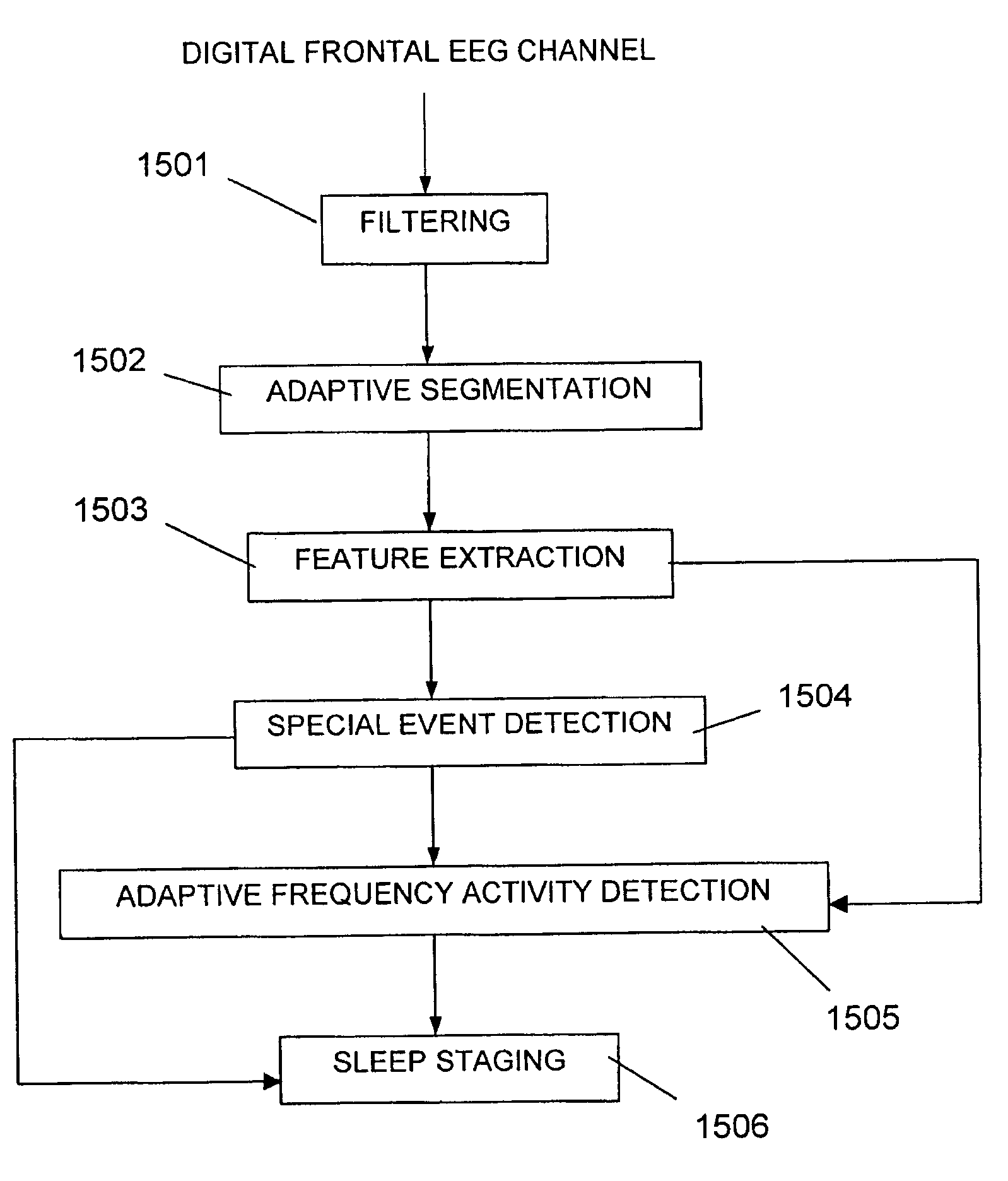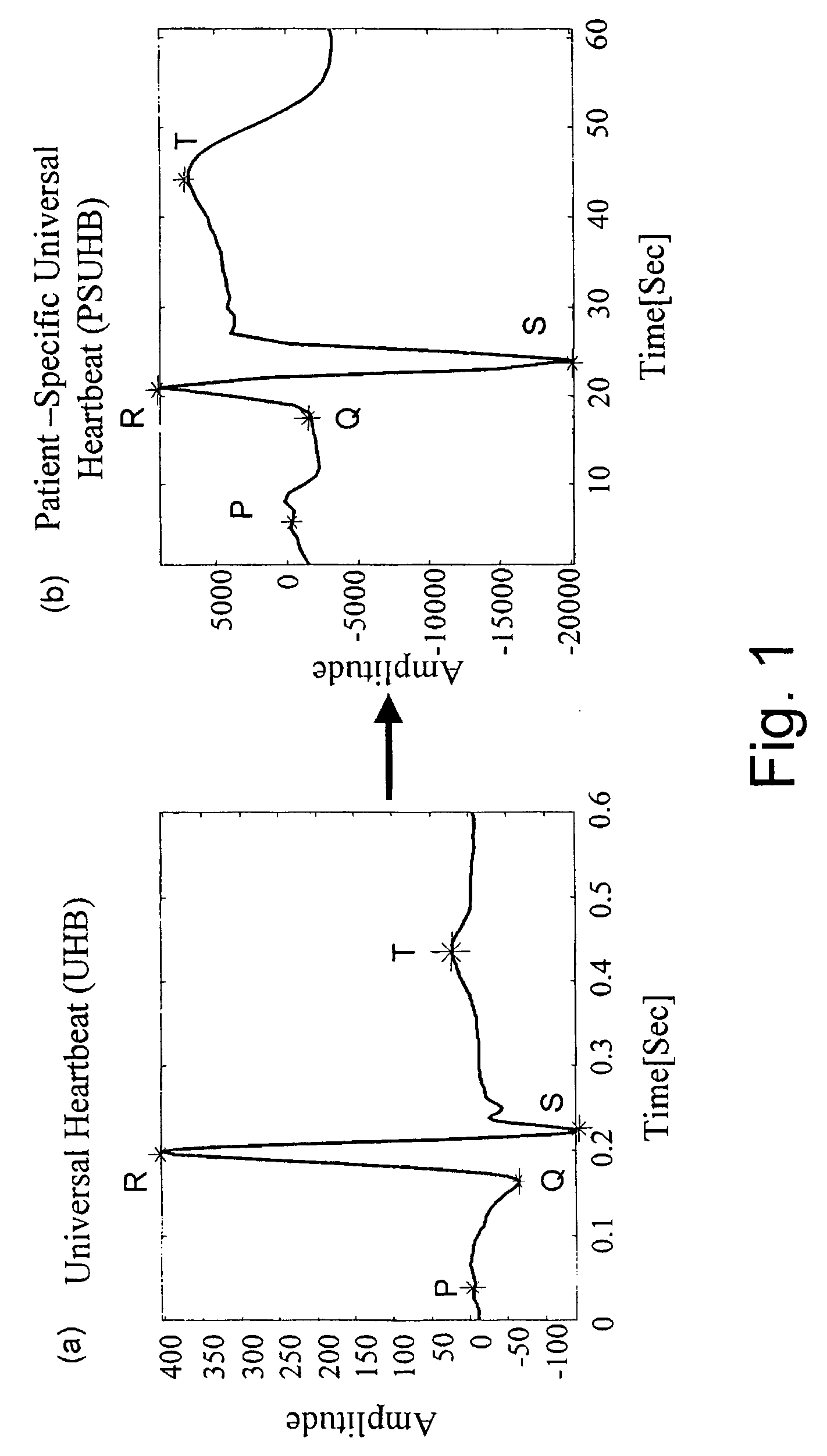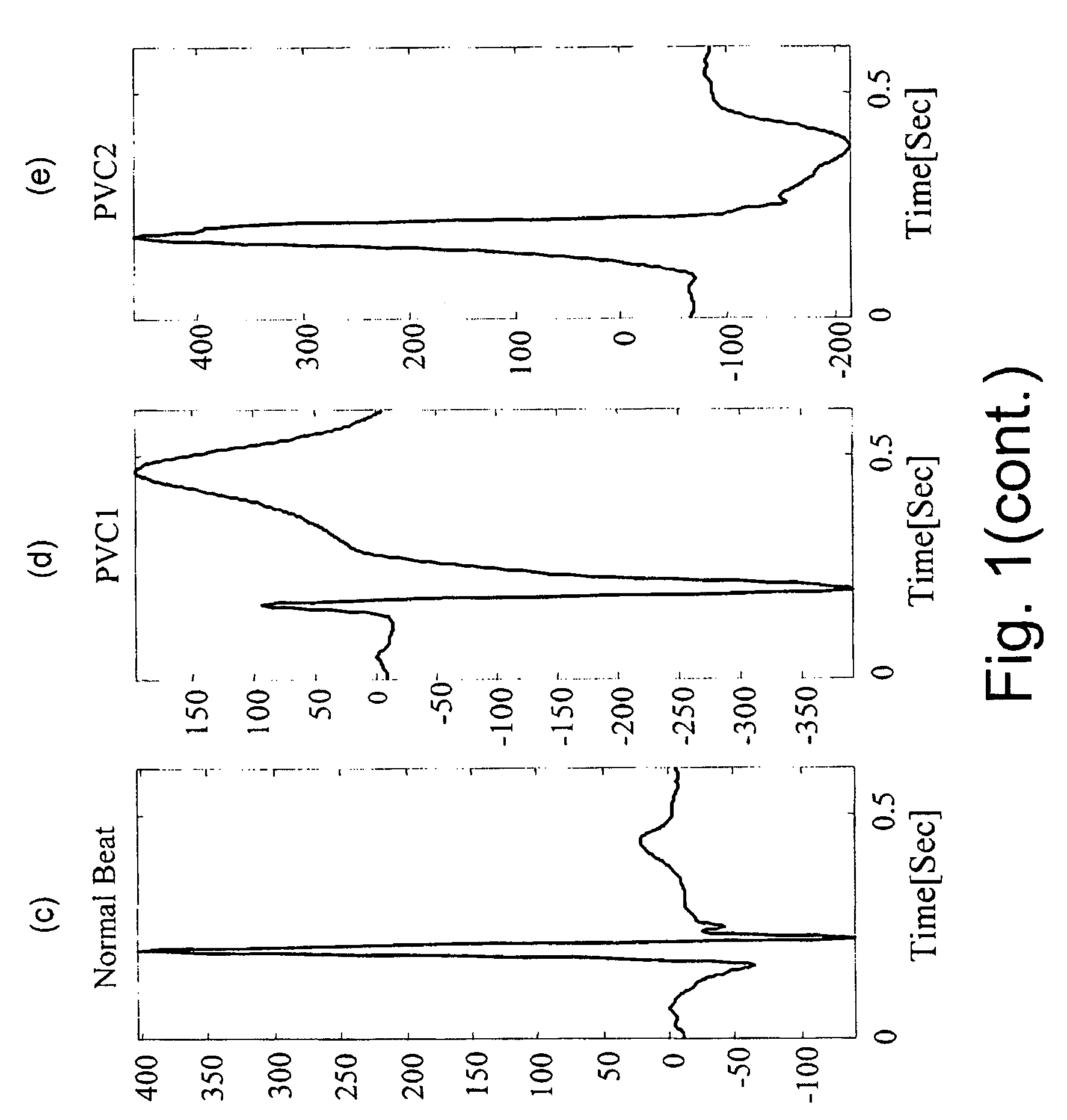Self-adaptive system for the analysis of biomedical signals of a patient
a biomedical signal and self-adaptive technology, applied in bioelectric signal measurement, medical science, healthcare informatics, etc., can solve the problems of poor signal-to-noise ratio (snr), acute problem, and “suffering” of biomedical signals, and achieve the effect of efficient transmission of selected biological data
- Summary
- Abstract
- Description
- Claims
- Application Information
AI Technical Summary
Benefits of technology
Problems solved by technology
Method used
Image
Examples
Embodiment Construction
[0085]In one aspect, the present invention is directed to a biomedical-analyzing platform (hereinafter referred to as “TeleMedicine Platform”—TMP) that is fast responsive, patient-adaptive and having high quality ambulatory remote monitoring of human biomedical signals, which are associated with cardiac status of a patient, his sleep patterns and respiratory behavior, by utilizing several known processing algorithms (i.e., HMM, Wavelet Transform algorithm and Viterbi) and novel Adaptive Segmentation Algorithms (ASA) and fuzzy-logic based decision-making algorithm. The present invention is also directed to a system that allows integrating analysis of a plurality of physiological signals.
[0086]General Introduction
[0087]The present invention is characterized by introducing a system that is patient-adaptive. According to the present invention, the system is capable of automatically adapting itself to the inherent cardiac, sleeping and respiratory status of individual patients, without h...
PUM
 Login to View More
Login to View More Abstract
Description
Claims
Application Information
 Login to View More
Login to View More - R&D
- Intellectual Property
- Life Sciences
- Materials
- Tech Scout
- Unparalleled Data Quality
- Higher Quality Content
- 60% Fewer Hallucinations
Browse by: Latest US Patents, China's latest patents, Technical Efficacy Thesaurus, Application Domain, Technology Topic, Popular Technical Reports.
© 2025 PatSnap. All rights reserved.Legal|Privacy policy|Modern Slavery Act Transparency Statement|Sitemap|About US| Contact US: help@patsnap.com



